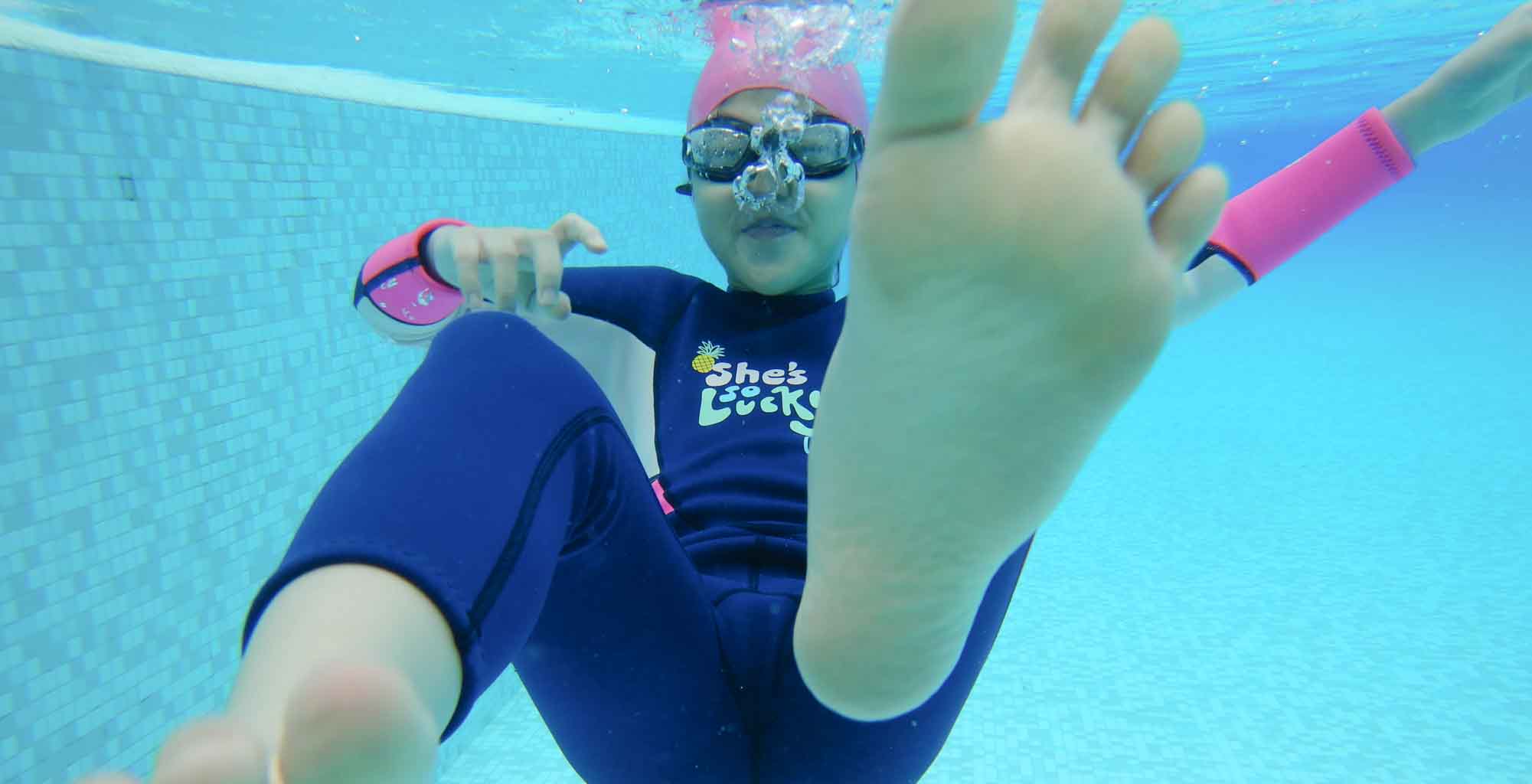How to Float for Swimming

All people should and can learn how to swim in the water. Learning how to float for swimming is very important and crucial to learning how to swim.
Knowing how to swim can save your life and is the first step to learning to swim freestyle. It may seem daunting or totally impossible, but the first thing to do is to believe that you can levitate.
Finding a good instructor is the next step. If you are afraid of water, they give you the confidence to overcome your first fear and help you relax in the water in a safe environment.
Flotation Features of Your Body
Let’s start with the basic physical principles: anything denser than water will sink in water. About two-thirds of the weight of the human body is made of water. This means that their density is similar to the density of water. Therefore, you don’t have to do much, if any, to swim on the water.
However, body composition can affect your natural swimming ability. In general, men tend to have higher muscle density than females. People with high muscle density or very thin muscles (a very low ratio of fat to muscle fibers) are more likely to sink.
So if you are young, male or very sporty female, good mechanics and techniques will help a lot. Still, your body wants to float instead of sink.
Vital capacity also affects how easy it is to stay on the water. People with strong high capacity are a little more likely to levitate for two reasons.
First, there is a large air pocket on the chest. Second, they tend to circulate more oxygen through their bodies.
Oxygen is less dense than water. The more oxygen you have in your body, the higher your buoyancy.
Now that we know why bodies tend to swim more or less, here are three ways to improve their swimming behavior in the water.
Relax
Ironically, the key to levitation is a big challenge for beginners. You need to relax. Once you have mastered this, you can “swim.”
Practice in shallow water will continue until you become confident in your ability to float naturally and your face gets used to being in the water. This is another factor that can increase fear.
If you can levitate but are still tense, pay attention to your breathing pattern. It has been scientifically proven that deep breathing not only helps the body relax but also brings more oxygen to the body and increases buoyancy.
Look at the sky (or the ceiling if inside) and take a deep breath. Fill your lungs with oxygen each time you breathe. You will feel the air rushing to the bottom of your lungs (near the bottom of your chest). Hold your breath for a moment and feel essentially weightless on the water. Exhale and repeat.
Improve Your Float Mechanics
Slowly relax back into the water allowing your shoulders and head to recline as if lying down in bed. Small movements of your hands will allow you to stay face up with your mouth and nose out of the water, and continue to breathe naturally.
If your legs always sink, you can either reach your hands above your head or push off slightly from the bottom.
By reaching your arms above your head, you are creating longer support above your waist, which gives you more leverage for lifting your legs up to the surface. At the very least, it will bring your legs higher in water.
Strengthen Your Technique
Engage your abdominal muscles. Use your core strength to lift your lower body toward the surface. You might think about a string attached to your belly button that is pulling your torso to the top of the water. The link between your mind and your body is powerful. If you can simply imagine the string pulling your belly and your feet to the surface of the water, your muscles will probably organize themselves and make it happen!
Kick very gently. Don’t kick so hard that you have forward momentum. But very light and gentle, alternating leg movements will help force them to the surface and keep you balanced.
Of course, as you do this, stay relaxed. Methodical small movements with your hands and feet will help keep you stabilized and close to the surface of the water. You will notice if you do not move your legs they have the inclination to sink to the bottom.
Enjoy The Weightlessness
Relax and lie on your back, then enjoy the sensation of water pooling and the comfort of your joints and muscles.
For longer swimming times, you can use pool noodles to support under your shoulders or knees. These should be used as a swimming aid and should not be completely trusted as they are floating.


